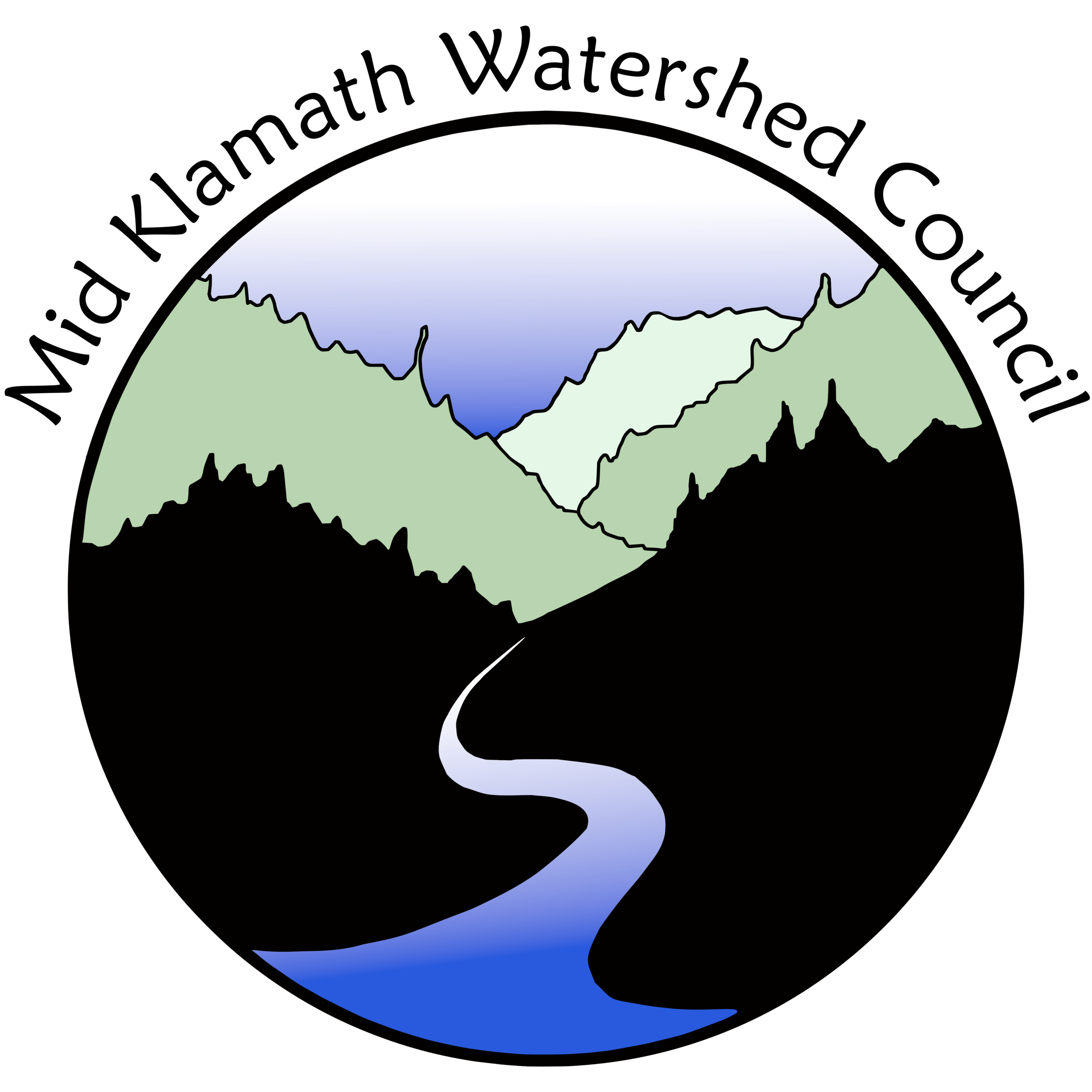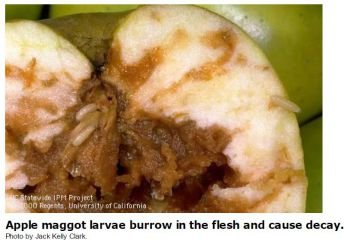Pests & Diseases
Peach Leaf Curl
December is the Time to Manage Peach Leaf Curl
Most gardeners in the Klamath-Trinity have encountered Peach Leaf Curl – the curled, deformed leaves that appear on peaches and nectarines in the early spring. Problem is, by the time it’s visible it is already too late to treat it; in fact, the ideal window for controlling peach leaf curl is coming up in early to mid-December. Peach leaf curl is caused by a fungus, Taphrinia deformans, and can be either a nuisance, or lethal to the tree, depending on its severity and the age of the tree. The fungus is found just about anywhere peaches are grown, and is particularly damaging following warm, wet winter-Spring weather. The options for control are selecting immune varieties such as Frost, Q-1-8, Oregon Curl Free, resistant varieties (such as Red Haven, Rio Oso Gem) that contract the disease but bounce back quickly; and/ or applying a sufur-based dormant spray before the leaf buds swell, which occurs in our area in mid-December. Many exasperated gardeners miss this critical window and find that even after spraying they still have the curl. A brief look at the life cycle of peach leaf curl will reveal that timing of this spraying is essential: a dormant spray must be applied before the buds crack and swell, or it will not have any effect on controlling the disease. The best material to use, lime sulfur, is also the least toxic.
Life Cycle - By the time a gardener sees peach leaf curl in the spring, the fungus has already penetrated the cellular tissue of the foliage and is doing its damage. At this point the fungus is immune to treatment. Though foliar feeding with compost tea or concentrated kelp solution will help to fortify the tree and bring it through the infection, no amount of fungicide will help the situation. Leaves affected by the curl eventually shrivel completely and fall off and the tree pushes new leaves to replace the damaged ones. The peach leaf curl will continue to attack the new foliage until temperatures rise and humidity decreases; it takes several days in a row above 85 degrees F for the fungus to go dormant, so only after a stretch of warm, dry weather will the disease symptoms will slow down and eventually disappear. The fungus forms tough spores that are resistant to heat and desiccation in order to survive the summer. These spores germinate with the first fall rains and remain active during the winter as long as temperatures are over 45 degrees F.
Look closely at a dormant peach bud in late November/ early December and you’ll see a tightly closed bud protected by a waxy scale. Sometime in late December or January, depending on location, peach buds will swell slightly and crack the protective scale, leaving them susceptible to the fungus. In our mild winters this bud swell happens 1 to 2 months before the peach blooms, much earlier than most gardeners realize. Applying a dormant spray before this bud swell is the key to controlling leaf curl. Timing depends on weather, but in our low elevation areas it can occur as early as mid-December in a sunny winter. In higher elevation colder areas it will be much later. For these low, warmer areas, apply the first spray in early December, and then another in mid to late January. The first spray is the most critical, and some gardeners forgo the second application and accept some peach leaf curl. Researchers at Washington State University found that lime sulfur (calcium polysulfide), a low-toxic spray that is approved for organic production, is the best material for controlling peach leaf curl. A dormant oil will help the mix stick to the branches and also smother soft body insect pests and eggs. Copper sulfate is also used, but copper can build up in the soil and is toxic to earthworms and beneficial soil fungus, whereas the lime sulfur breaks down rapidly. Lime sulfur used to be readily available in any gardening store but is now hard to find. Peaceful Valley Farm Supply sells it in a 2.5 gallon container, which is far more than most gardeners or homesteaders need. It does not store for more than a few months, so if you buy this much then be sure to share it with friends.
Cultural Control – A healthy soil and a healthy tree is the first step in disease control. Fertilize your trees each year with compost and or aged manures. It is good to add a source of calcium and phosphorous every 3-5 years, use oyster shell flour for calcium and soft rock phosphate for phosphorous. Foliar feeding with concentrated kelp solution, will help to fortify the tree and bring it through the infection. Turning in the fallen leaves in autumn or raking them up and adding them to your compost pile will reduce the amount of fungal inoculant.
Spotted Wing Drosophila
What's up With the Worms in My Cherries? It's the Spotted Wing Drosphila
Drosophila suzukii, is a new pest that has recently arrived the Klamath-Trinity region. It's a small fruit fly that lays several eggs in ripening cherries. The worms hatch out and burrow through the flesh, turning the fruit brown and ruining it. The real bummer is that this same pest will infest other fruits such as berries, persimmons and stone fruit.
Control - Trapping is used in commercial orchards to detect and monitor fly populations. While trapping has not proven to be an effective control in large orchards, it could make a difference in the more remote and isolated homestead gardens and farms found in our area. Traps are easy and cheap to make using any plastic containers baited with apple cider vinegar. Each adult female fly lives up to two weeks and can lay up to 100 eggs a day, and each trap will catch dozens of flies, so trapping makes a difference. Hang traps as soon as you start to see some color in the fruit and look for small flies with the identifying two spots on the wing. (See below). Avoid over watering fruit trees and berries as this splits the fruit and attracts more flies. Harvesting ripe fruit promptly and disposing of damaged fruit by either bagging it up or crushing it and letting it dry in the sun will reduce the fruit fly population. Most insecticides are broad spectrum and will kill beneficial insects such as predators and honeybees as well as the target pest. Spinosad is an organically approved insecticide that has been shown effective controlling the Two Spotted Drosophila.
How to Trap the Two Spotted Drosophila - You can use any plastic container with a firm lid to make a trap, plastic soda/water bottles, or yogurt containers work great . Clean out the container, drill 5/16 inch holes around the perimeter, and place a few inches of vinegar with a few drops of dish detergent. Drill two holes on opposite sides near the top of the container and string a wire to hang the trap in a fruit tree. One container will trap scores of flies, and each female lays over 1,000 eggs, so you are preventing thousands of infestations by trapping!
Apple Pests - Apple Maggot and Coding moth
There are two significant insect pests that attack apples: The Codling Moth is a native insect that has been around forever, though problematic, it does not destroy the entire fruit, it's possible to manage and live with. The Apple Maggot, a more recent arrival to some sites in the Klamath Trinity region, is far more damaging and often renders the fruit un usable for either fresh eating or processing. This pest exists in our area, but not everywhere, so if you have it it is very important to avoid spreading it by moving your fruit.
The Codling Moth, Cydia pomonella, is a common pest that bores into the fruit (including apples, pears and walnuts), eats the seed, and exits; sometimes you will find the "worm: (actually a caterpillar) in the fruit, sometimes just the trail and frass. This is a native insect that has been around for years, and while it causes significant damage, the fruit can still be sliced for fresh eating or processed for cider or preserves. Populations fluctuate, so there are good years and bad years. As with most pests, there is no "magic bullet", and it is necessary to employ several strategies - Clean up "strikes" (infected fruit) and dispose of by burying or composting thoroughly in a hot pile. Place confusion pheromone lures in trees to disrupt mating and reduce adult populations. Further control methods include the application of granliosis virus (Cyd-Ex), Spinosad insecticide, and kaolin clay directly to fruit (Surround) though these methods tend to e feasible only for commercial scale growers.
The Pest Notes bulletin from UC Davis provides a succinct description of the Codling Moth life cycle and control. This UC Pest Management Guide is more detailed and includes links to their website for more information.






